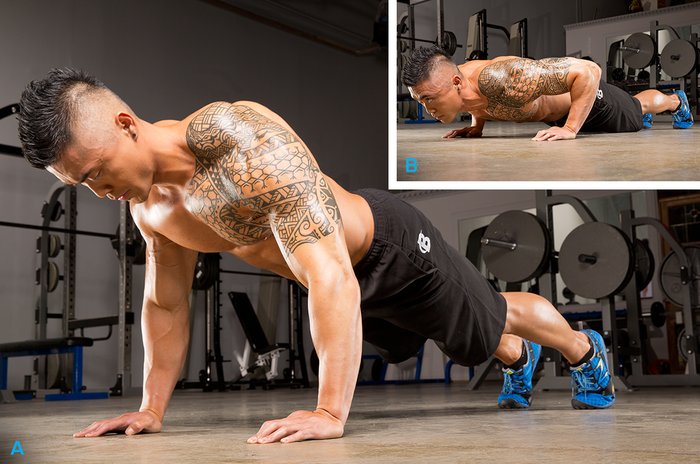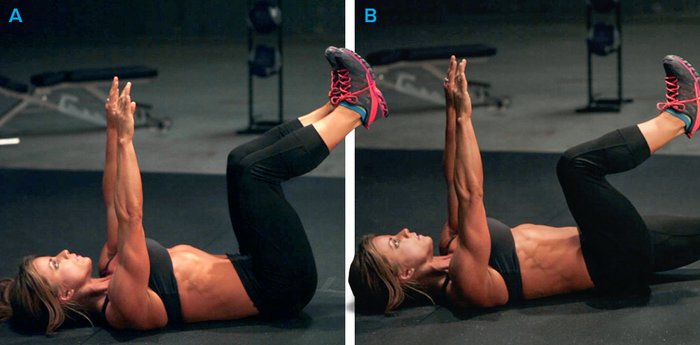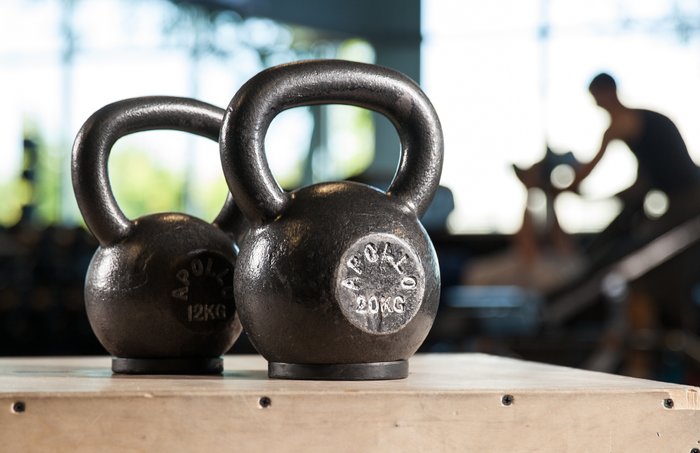When I was in my 20s, I bought into the idea that all you needed to do to train your abs was squat, deadlift, and press heavy. I was wrong.
My first back injury—a sacroiliac-joint injury—occurred in 1999, a couple of months before my wedding. (That was awesome.) My second was in 2002, shortly after my 29th birthday, while deadlifting. Happy birthday to me.
As a grim follow-up to these two incidents, I tore the labrum in my right and left hips in April and September of 2005. Then I spent the better part of my 30s trying to manage the fallout of those injuries and to get back to doing what it is I love to do: lift heavy weights over my head. By the time 2010 rolled around, I felt done.
After more than eight years of corrective exercise strategies, including the latest spinal-stabilization exercises, my body had had enough of the heavy stuff. No matter how long I took them out for, and no matter when I put them back in, the big lifts just ended up reinjuring me. (And, yes, my technique was solid.) I'd get back up around 85 or 90 percent of my previous bests, and something would go sproing—again. Sound familiar?
But just when it looked like the end of the story, a single movement helped me to open up a new chapter.
Reflexive What?
In late 2009, my buddy Brett Jones, who is on the advisory board of Functional Movement Systems, a company that identifies major limitations in functional movement patterns, assessed me and discovered I was lacking what is called "reflexive core stability." That's the ability of your body to stabilize your spine and pelvis subconsciously while other parts of your body are moving. As you can imagine, that's pretty important when you're trying to lift big weights on your back or overhead.
The most frustrating part of this for me was that I had spent years mastering—and teaching—the whole concept of "bracing" for spinal stability. Yet the payoff wasn't there when I'd needed it most.

If you want to lift big numbers to get stronger, pack on more muscle, or just do more work to strip off some blubber, you need strong abs.
It also explained why I could never really break the chronic pain cycle—my body wasn't aligned correctly, so the muscles that were supposed to work weren't working, and the muscles that were working, were overworking, creating movement compensations.
Here's why this all matters to you: If you want to lift big numbers to get stronger, pack on more muscle, or just do more work to strip off some blubber, you need strong abs. And more specifically, you need abs that work when you're not thinking about making them work. Because, heaven forbid, what happens if something goes wrong and you lose your brace—like at the bottom of a snatch? You need to be able to correct and survive to lift again, not be "one and done."
According to Dr. Stuart McGill, a professor of spine biomechanics at the University of Waterloo, back injuries occur due to a lack of stabilization strength endurance. In other words, it's not how strong your six-pack is that determines whether you'll get injured, it's how long you can maintain control of your spine and pelvis in relation to the rest of your body. How long can your deep abdominal musculature stabilize your spine and pelvis while you're under load?
The answer is, you don't want to find out.

Determining Your Reflexive Core Stability Threshold
How do you know if you have good reflexive core stability?
Take these three simple tests:
1. Do A Push-Up

Push-up
Sure, it's a great upper-body developer, but the push-up is also a simple little test to see if you can keep your body's natural spinal alignment. The test is simple: Do a push up—a real one, with full range of motion—but keep your spine aligned.
In other words, don't let your hips sag. You shouldn't have to brace your abs or squeeze your glutes in order to do so. If your hips sag, or you have to tighten dramatically to make the push-up happen, you don't have enough reflexive core stability.
2. Do The Dead Bug

Dead Bug
This common ab exercise is a great way to isolate your deep abdominal musculature to see if it's actually working correctly. To perform it, lie on your back with your arms and legs in the air. Simultaneously lower your left arm and right leg while keeping your lower back pressed into the floor. Return to the start, and repeat using your right arm and left leg.
Can't keep your lower back on the floor? Then you have a lack of reflexive core stability.
3. Do The Original Strength Dead Bug
Ok, so you can do the dead bug while keeping your lower back on the floor.
Now, do what I call the OS dead bug. The OS stands for "Original Strength," the name of the book and training system I co-created with my friend Tim Anderson.
It's done almost exactly the same as the regular dead bug, except for two minor changes:
Make sure your start and finish positions are less than 90 degrees at the hip. In other words, it's a little closer to your head than perpendicular.
Don't brace your abs, or even try to contract them, while lowering your arm and leg.
These changes jump-start the reflexive nature of your deep abdominal musculature.
If you can't lower your arm and your leg while keeping your leg straight and your lower back on the floor, you have a loss of reflexive core stability, and this test will own you pretty quickly.
Training To Regain Your Reflexive Core Stability
Starting in 2010, I took almost two years off traditional strength training. I gave up all barbell and kettlebell work and just focused on bodyweight training, using exercises such as the OS dead bug in my program.

When I picked up a barbell again in 2012, I had lost 20 pounds of body weight, yet I came back stronger in certain posterior-chain-dominant exercises, like the double kettlebell clean, where I was able to perform 4 sets of 10 reps using a pair of 88-pound kettlebells with just two minutes of rest between sets. Checking my training log, I had never been able to do that before. I almost immediately snatched 220 pounds from the hang position as well, without having practiced it for two years.
In other words, I didn't train the major lifts, and I got stronger—or at least maintained my strength in them—simply by restoring my reflexive core stability.
To restore your reflexive core stability, perform the OS dead bug, but use these specific cues to maximize your results
- Focus on keeping your tailbone off the ground as you lower and raise your arms and legs.
- Maintain a hip angle of less than 90 degrees on the leg that's in the air.
- Work up to 4 sets of 25 reps per side, with approximately 90 seconds of rest between sets, with straight legs.
- If you can't use straight legs and keep your tailbone off the ground, bend your knees, and over the course of time, work on getting them straighter.
- Train the OS dead bug every day if you can.
How long will this take? As long as it takes you to hit those rep-and-rest markers. There is no hard-and-fast rule, but it will take you longer if you have a significant injury history like I do.
Meanwhile, reduce the loading in your other training by about 20 percent. Put everything on maintenance, in other words. Don't stop—just reduce it. Keep doing what you love doing, but add the OS dead bug into the mix.
When you hit your 4 sets of 25, it's time to turn up the volume again and start working your way back up to the heavier weights. I think you'll be pleasantly surprised, as I was, at the results.

